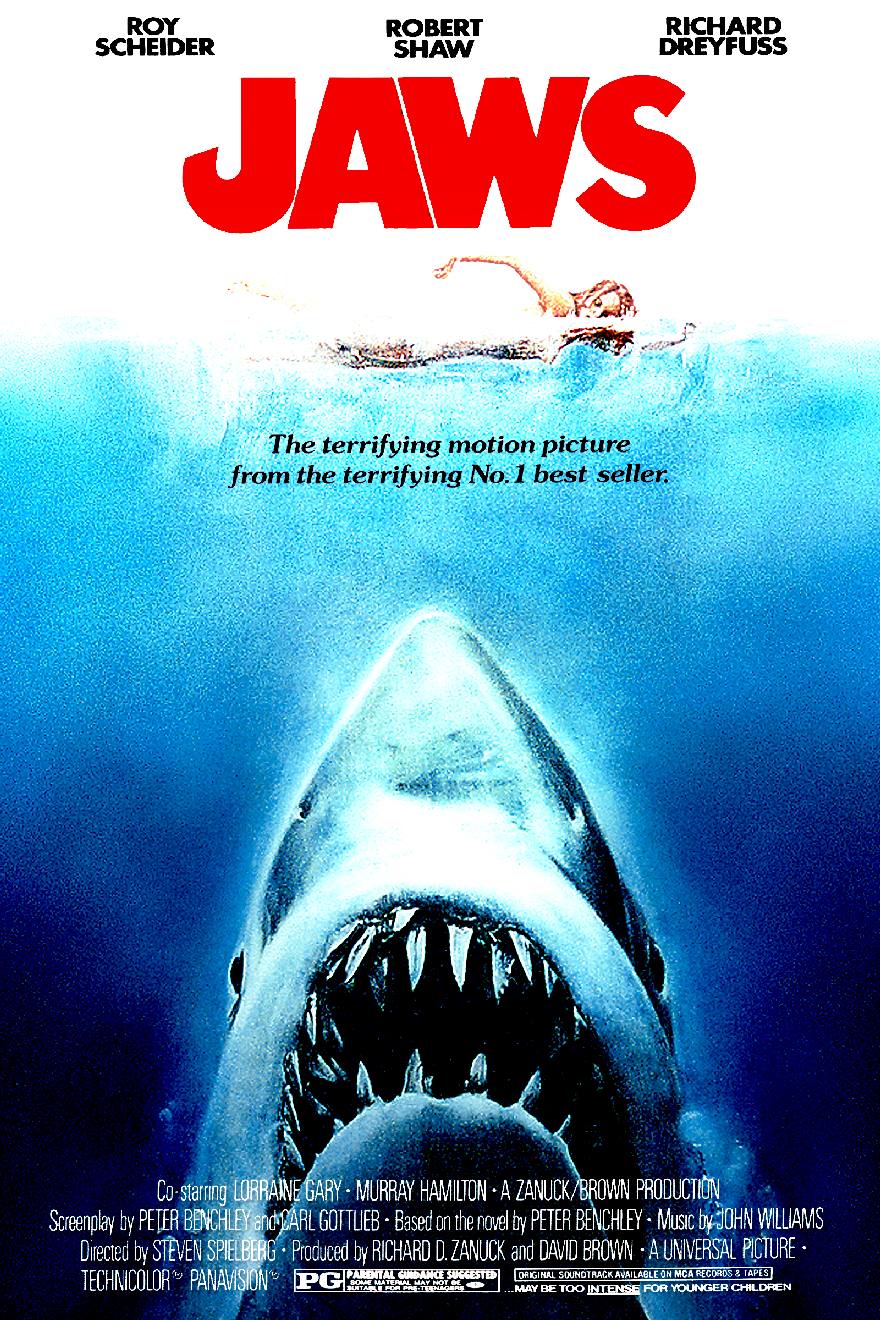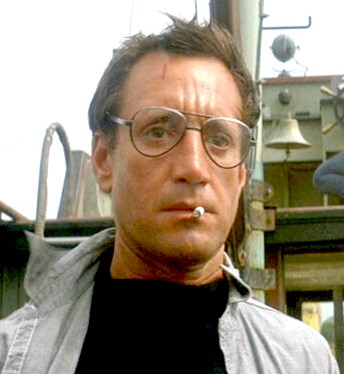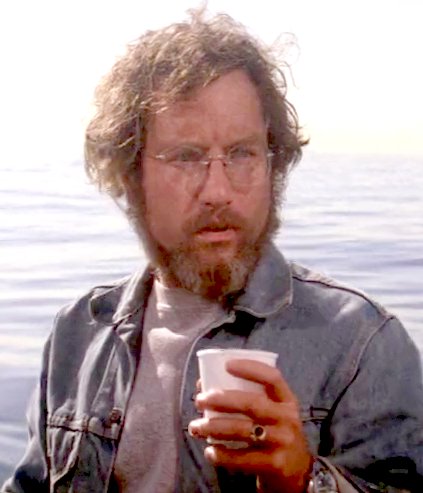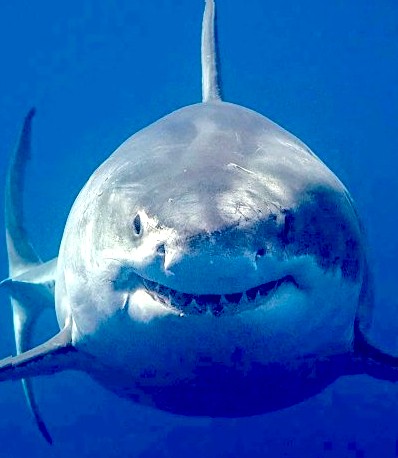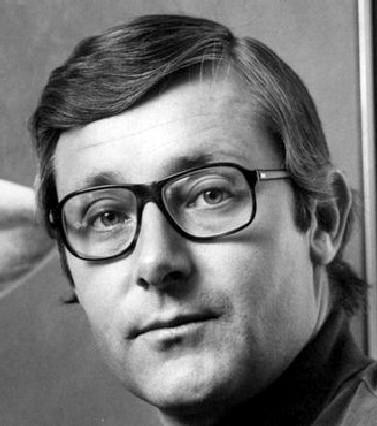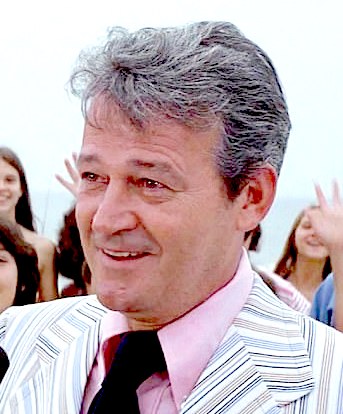In the beach town of Amity Island, a young woman, Chrissie Watkins, goes skinny dipping in the ocean. While treading water, she is unknowingly attacked by an unseen force. The next day, her partial remains are found on shore. The medical examiner's conclusion that the death was due to a shark attack leads police chief Martin Brody to close the beaches.
Mayor Larry Vaughn persuades him to reverse his decision, fearing that the town's summer economy will be ruined. The coroner tentatively concurs with the mayor's theory that Chrissie was killed in a boating accident. Brody reluctantly accepts their conclusion until the shark kills a young boy, Alex Kintner, in full view of a crowded beach. A bounty is placed on the
shark, causing an amateur shark-hunting frenzy, and local professional shark fisherman Quint offers to catch and kill it for $10,000. Meanwhile, consulting
oceanographer Matt Hooper examines
Chrissie's remains, and confirms her death was caused by a
shark - an unusually large one.
When local fishermen catch a tiger shark, the mayor proclaims that the beach is safe. Mrs. Kintner, Alex's mother, confronts Brody and blames him for her son's death. Hooper expresses doubts that the tiger shark is responsible for the attacks, and his suspicions are confirmed when, after an examination, no human remains are found inside its stomach. Hooper and Brody find a half-sunken vessel while searching the night waters in Hooper's boat. Underwater, Hooper removes a sizable great white shark's tooth from the boat's hull, but drops it in fright after discovering the partial corpse of local
fisherman Ben Gardner. Vaughn dismisses Brody and Hooper's assertions that a huge great white shark is responsible for the deaths, and refuses to close the beaches, allowing only increased safety precautions. On the Fourth of July weekend, tourists pack the beaches. Following a juvenile prank with a fake shark, the real shark enters a nearby lagoon, killing a boater and causing Brody's oldest son, Michael, to go into shock. Brody then convinces a guilt-ridden Vaughn to hire Quint.
Quint, Brody, and Hooper set out on Quint's boat, the Orca, to hunt the shark. While Brody lays down a chum line, Quint waits for an opportunity to hook the shark. Without warning, it appears behind the boat. Quint, estimating its length at 25 feet (7.6 m) and weight at 3 tonnes (3.0 long tons; 3.3 short tons),
harpoons it with a line attached to a flotation barrel, but the shark pulls the barrel underwater and disappears.
At nightfall, Quint and Hooper drunkenly exchange stories about their assorted scars, and Quint reveals that he survived the attack on the USS Indianapolis. The shark returns unexpectedly, ramming the boat's hull, and disabling the power. The men work through the night, repairing the engine. In the morning, Brody attempts to call the Coast Guard, but
Quint, who has become obsessed with killing the shark without outside assistance, smashes the radio. After a long chase, Quint harpoons the shark with another barrel. The line is tied to the stern cleats, but the shark drags the boat backward, swamping the deck and flooding the engine compartment. Quint prepares to sever the line to prevent the transom from being pulled out but the cleats break off, keeping the barrels attached to the shark. Quint heads toward shore to draw the shark into shallower waters, but he overtaxes the damaged engine and it blows up.
As the Orca slowly sinks, the trio attempts a riskier approach. Hooper enters the water in a shark-proof cage, intending to lethally inject the shark with strychnine, using a hypodermic spear. The shark attacks the cage, causing Hooper to drop the spear, which sinks and is lost. While the shark thrashes in the tangled remains of the cage, Hooper manages to escape to the seabed. The shark breaks free and leaps onto the boat, devouring Quint in the process. Trapped on the sinking vessel, Brody shoves a pressurized
scuba tank into the shark's mouth and climbs onto the crow's nest. Using Quint's rifle, he shoots the tank, which explodes and obliterates the shark. Hooper surfaces, and he and Brody paddle back to Amity Island clinging to the remaining barrels.
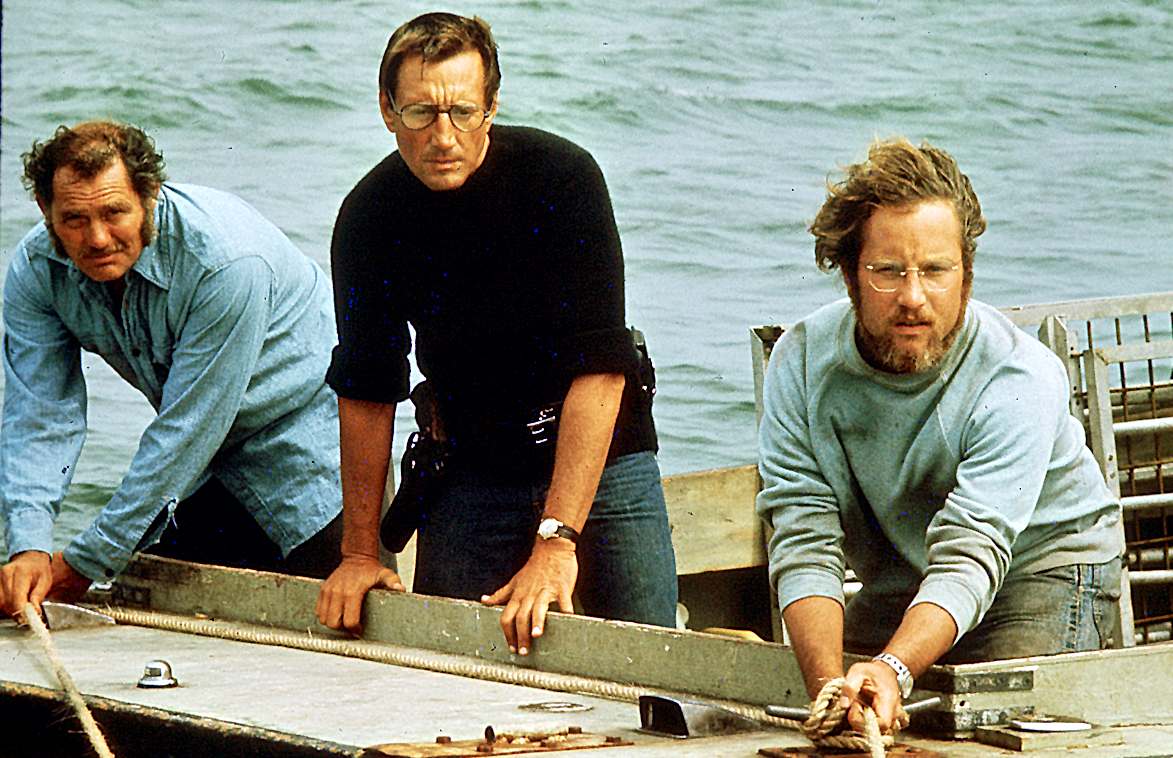
Jaws was the prototypical summer blockbuster, regarded as a watershed moment in motion picture
history. It won several awards for its music and editing. It was the highest-grossing film until the release of Star Wars in 1977. Both films were pivotal in establishing the modern Hollywood business model, which pursues high box-office returns from action and adventure films with simple high-concept premises, released during the summer in thousands of theaters and advertised heavily. Jaws was followed by three sequels (without the involvement of
Spielberg
or Benchley) and many imitative thrillers. In 2001, it was selected by the Library of Congress for preservation in the United States National Film Registry as "culturally, historically, or aesthetically significant".
Not much of a shocker that! The film is superb, except for the opening
underwater sequence. When we saw that, we thought it was one of the
imitations. Fortunately, we didn't have to wait long for decent camera work,
in the night swim scene. Now that works. In our view it should have been the
opening sequence.
INFLUENCES
Herman
Melville's Moby-Dick is the most notable artistic antecedent to Jaws. The character of Quint strongly resembles
Captain
Ahab, the obsessed captain of the Pequod who devotes his life to hunting a
sperm
whale. Quint's monologue reveals a similar obsession with sharks; even his boat, the Orca, is named after the only natural enemy of the white shark. In the novel and original screenplay, Quint dies after being dragged under the ocean by a harpoon tied to his leg, similar to the death of Ahab in Melville's novel. A direct reference to these similarities may be found in Spielberg's draft of the screenplay, which introduces Quint watching the film version of
Moby-Dick; his continuous laughter prompts other audience members to get up and leave the theater. However, the scene from
Moby-Dick could not be licensed from the film's star,
Gregory
Peck, its copyright holder. Screenwriter Carl Gottlieb also drew comparisons to Ernest Hemingway's The Old Man and the Sea: "Jaws is ... a titanic struggle, like
Melville or Hemingway."
The underwater scenes shot from the shark's point of view have been compared with passages in two 1950s horror films, Creature from the Black Lagoon and The Monster That Challenged the World. Gottlieb named two science fiction productions from the same era as influences on how the shark was depicted, or not: The Thing from Another World, which Gottlieb described as "a great horror film where you only see the monster in the last reel"; and It Came From Outer Space, where "the suspense was built up because the creature was always off-camera". Those precedents helped Spielberg and Gottlieb to "concentrate on showing the 'effects' of the shark rather than the shark itself". Scholars such as Thomas Schatz have described how Jaws melds various genres while essentially being an action film and a thriller. Most is taken from horror, with the core of a nature-based monster movie while adding elements of a slasher film. The second half is both a buddy film in the interaction between the crew of the Orca, and a supernatural horror based on the shark's depiction of a nearly Satanic menace. Ian Freer describes Jaws as an aquatic monster movie, citing the influence of earlier monster films such as King Kong and Godzilla. Charles Derry, in 1977, also compared
Jaws to Godzilla; and Spielberg cited Godzilla, King of the Monsters! (1956) as a formative influence growing up, due to the "masterful" way in which "it made you believe it was really happening."
Critics such as Neil Sinyard have described similarities to Henrik Ibsen's play An Enemy of the People. Gottlieb himself said he and Spielberg referred to Jaws as "Moby-Dick meets Enemy of the People". The Ibsen work features a doctor who discovers that a seaside town's medicinal hot springs, a major tourist attraction and revenue source, are contaminated. When the doctor attempts to convince the townspeople of the danger, he loses his job and is shunned. This plotline is paralleled in Jaws by Brody's conflict with Mayor Vaughn, who refuses to acknowledge the presence of a shark that may dissuade summer beachgoers from coming to Amity. Brody is vindicated when more shark attacks occur at the crowded beach in broad daylight. Sinyard calls the film a "deft combination of Watergate and Ibsen's play".
|
